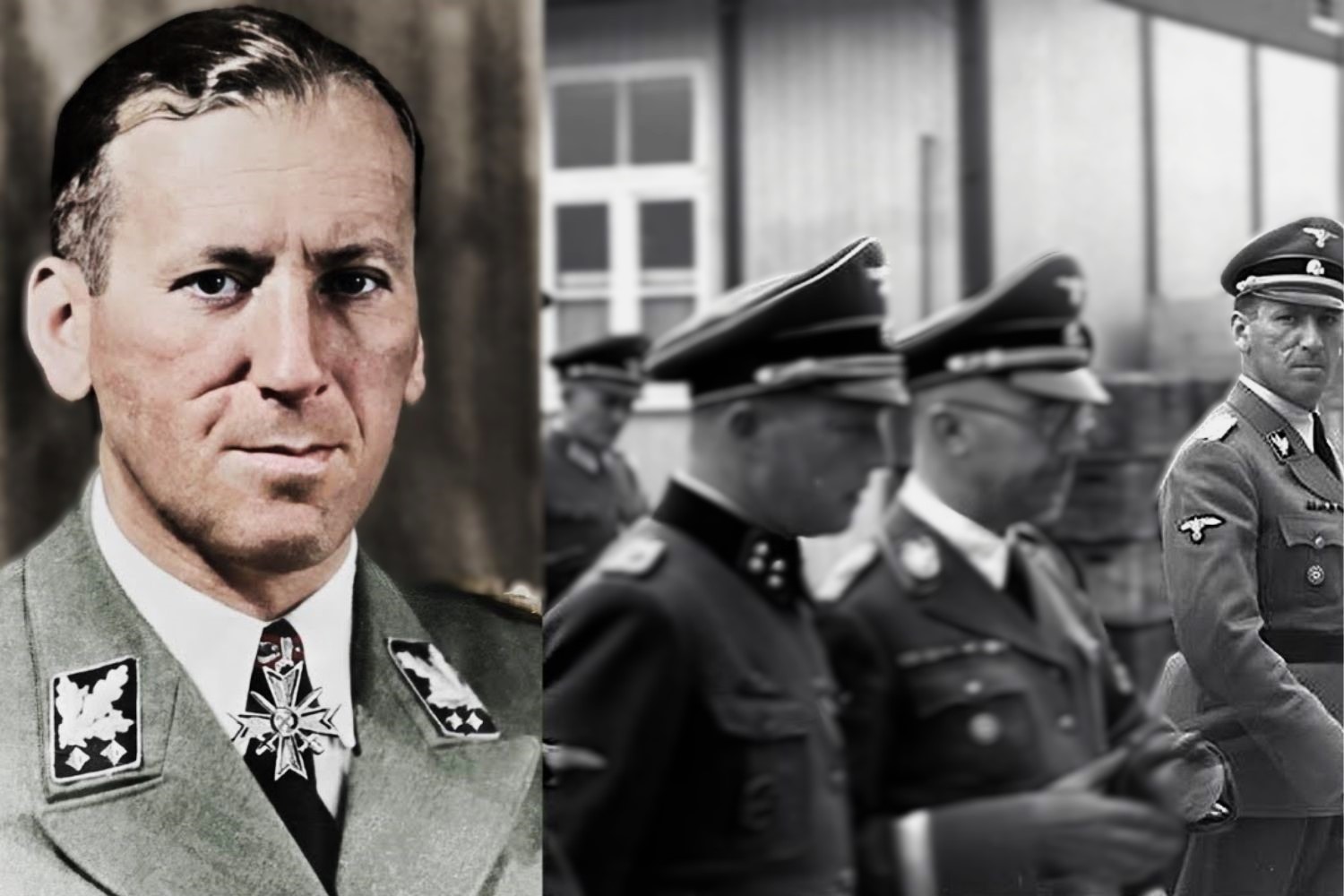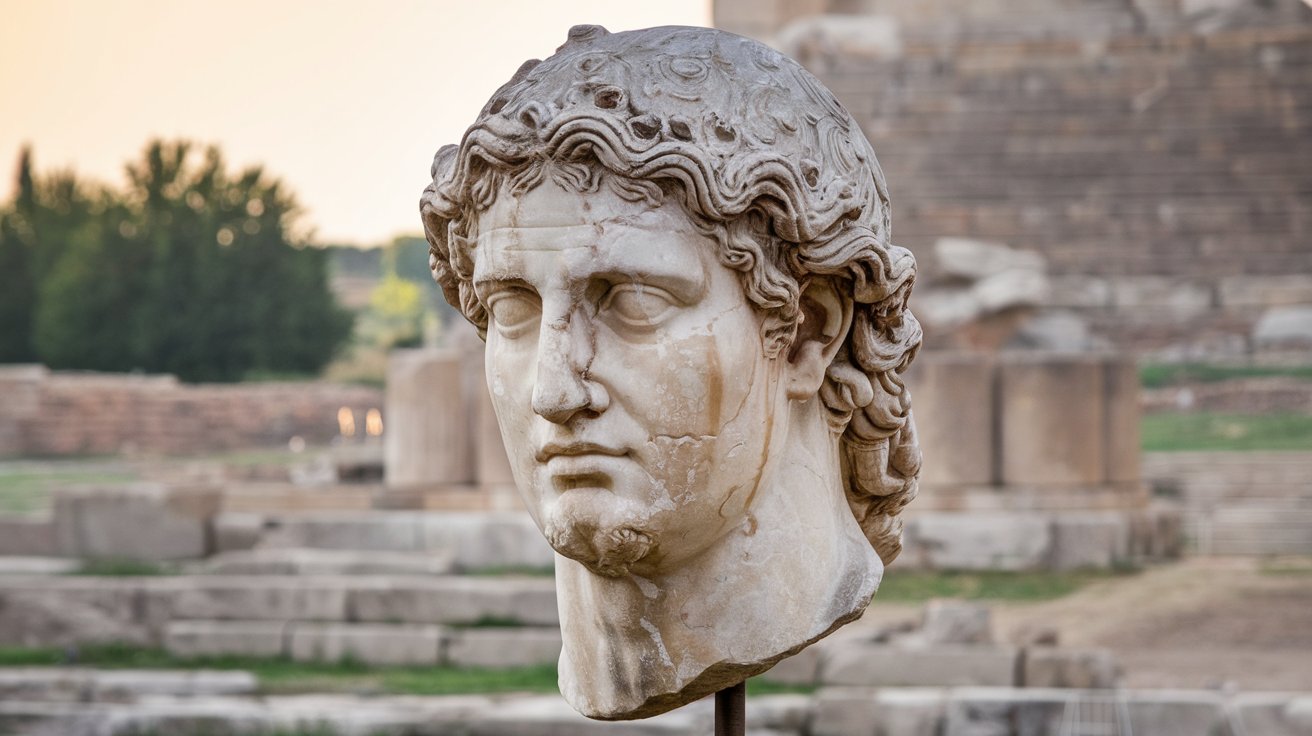
Who was Ernst Kaltenbrunner? Ernst Kaltenbrunner was a high-ranking Austrian SS official during World War II. He played a significant role in the Nazi regime, heading the Reich Main Security Office (RSHA) after Reinhard Heydrich's assassination. Kaltenbrunner was deeply involved in the Holocaust, overseeing the Gestapo, SD, and other security services. His actions contributed to countless atrocities, making him one of the most notorious figures in Nazi history. Captured by Allied forces in 1945, he was tried at the Nuremberg Trials. Convicted of war crimes and crimes against humanity, Kaltenbrunner was executed in 1946. His legacy remains a grim reminder of the horrors of the Nazi era.
Key Takeaways:
- Ernst Kaltenbrunner, a prominent Nazi figure, rose to power through the Austrian Nazi Party and played a significant role in the implementation of the Holocaust during World War II. His trial at Nuremberg set important precedents for international law.
- Despite his towering height and charming demeanor, Ernst Kaltenbrunner's ruthless efficiency and unwavering loyalty to Adolf Hitler made him a symbol of Nazi brutality. His legacy serves as a stark reminder of the dangers of unchecked power and ideological extremism.
Early Life and Education
Ernst Kaltenbrunner's early years shaped his future path. Here are some intriguing facts about his beginnings.
- Born on October 4, 1903, in Ried im Innkreis, Austria, Kaltenbrunner grew up in a middle-class family.
- His father, Hugo Kaltenbrunner, was a lawyer, which influenced Ernst's career choice.
- Kaltenbrunner attended the State Realgymnasium in Linz, where he excelled academically.
- He studied law at the University of Graz, graduating in 1926 with a doctorate in law.
- During his university years, he joined the German nationalist student fraternity, Arminia Graz.
Rise in the Nazi Party
Kaltenbrunner's involvement with the Nazi Party marked a significant turn in his life. Here are some key points about his rise within the party.
- In 1932, he joined the Austrian Nazi Party, quickly becoming a prominent member.
- Kaltenbrunner participated in the failed July Putsch of 1934, an attempt to overthrow the Austrian government.
- After the Putsch, he was imprisoned for six months but continued his Nazi activities upon release.
- By 1935, he became the leader of the SS in Austria, known as the SS-Oberabschnitt Donau.
- Following the Anschluss in 1938, he was appointed as the Higher SS and Police Leader for Austria.
Role in World War II
Kaltenbrunner played a significant role during World War II. These facts highlight his involvement.
- In 1943, he was appointed Chief of the Reich Main Security Office (RSHA), succeeding Reinhard Heydrich.
- As head of the RSHA, Kaltenbrunner oversaw the Gestapo, SD, and Kripo, consolidating his power.
- He was deeply involved in the implementation of the Holocaust, coordinating the deportation of Jews to concentration camps.
- Kaltenbrunner also played a role in suppressing resistance movements in occupied territories.
- He was known for his ruthless efficiency and unwavering loyalty to Adolf Hitler.
Post-War Capture and Trial
After the war, Kaltenbrunner faced justice for his actions. Here are some facts about his capture and trial.
- In May 1945, he was captured by American troops in the Austrian Alps.
- Kaltenbrunner was one of the highest-ranking Nazis to be tried at the Nuremberg Trials.
- He faced charges of war crimes, crimes against humanity, and crimes against peace.
- During the trial, he denied knowledge of the Holocaust, despite overwhelming evidence.
- On October 1, 1946, he was found guilty on all counts and sentenced to death.
Execution and Legacy
Kaltenbrunner's legacy is marked by his heinous crimes and subsequent punishment. These facts shed light on his final days and lasting impact.
- He was executed by hanging on October 16, 1946, at Nuremberg Prison.
- Kaltenbrunner's execution was part of the first wave of Nuremberg executions.
- His last words were reportedly a declaration of loyalty to Hitler and the Nazi cause.
- Kaltenbrunner's body was cremated, and his ashes were scattered in an undisclosed location.
- His role in the Holocaust and other war crimes has made him a symbol of Nazi brutality.
Personal Life and Characteristics
Beyond his political and military career, Kaltenbrunner had a personal life that offers additional insights into his character.
- He married Elisabeth Eder in 1934, and they had three children together.
- Kaltenbrunner was known for his towering height, standing at 6 feet 7 inches.
- He had a distinctive facial scar, which he claimed was from a duel, but others suggest it was from a car accident.
- Despite his brutal reputation, he was described by some as charming and charismatic in social settings.
- Kaltenbrunner was an avid hunter and enjoyed outdoor activities.
Influence and Relationships
Kaltenbrunner's influence extended beyond his official roles, impacting various relationships and networks.
- He was a close confidant of Heinrich Himmler, the head of the SS.
- Kaltenbrunner maintained strong ties with other high-ranking Nazis, including Hermann Göring and Heinrich Müller.
- He played a key role in the establishment of the Einsatzgruppen, mobile killing units responsible for mass murders.
- Kaltenbrunner's influence reached into the highest echelons of the Nazi regime, making him a powerful figure.
- His ability to navigate the complex Nazi hierarchy contributed to his rise and sustained power.
Historical Impact and Controversies
Kaltenbrunner's actions and decisions left a lasting impact on history, with numerous controversies surrounding his legacy.
- His involvement in the Holocaust has been extensively documented, making him a central figure in studies of Nazi atrocities.
- Some historians argue that Kaltenbrunner's role in the Nazi regime has been overshadowed by other figures like Himmler and Heydrich.
- Debates continue about the extent of his responsibility for specific war crimes, given the hierarchical nature of the Nazi government.
- Kaltenbrunner's trial at Nuremberg set important precedents for international law and the prosecution of war crimes.
- His life and actions serve as a stark reminder of the dangers of unchecked power and ideological extremism.
Reflecting on Ernst Kaltenbrunner's Legacy
Ernst Kaltenbrunner's life leaves a chilling mark on history. As a high-ranking Nazi official, his actions during World War II contributed to some of the darkest chapters in human history. His role in the Holocaust and other war crimes showcases the depths of human cruelty. Yet, understanding his life and actions is crucial for ensuring such atrocities never happen again.
Kaltenbrunner's trial and subsequent execution at the Nuremberg Trials serve as a stark reminder of the importance of justice and accountability. His story is a testament to the need for vigilance against hatred and tyranny. By studying figures like Kaltenbrunner, we gain insight into the mechanisms of evil and the importance of standing up for human rights.
Remembering these facts helps us honor the victims and reinforces the commitment to a more just and compassionate world.
Frequently Asked Questions
Was this page helpful?
Our commitment to delivering trustworthy and engaging content is at the heart of what we do. Each fact on our site is contributed by real users like you, bringing a wealth of diverse insights and information. To ensure the highest standards of accuracy and reliability, our dedicated editors meticulously review each submission. This process guarantees that the facts we share are not only fascinating but also credible. Trust in our commitment to quality and authenticity as you explore and learn with us.


